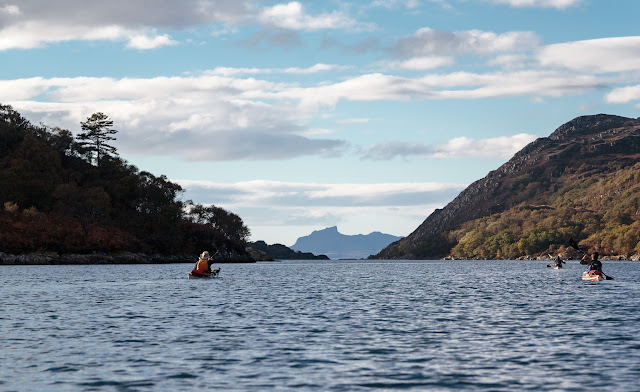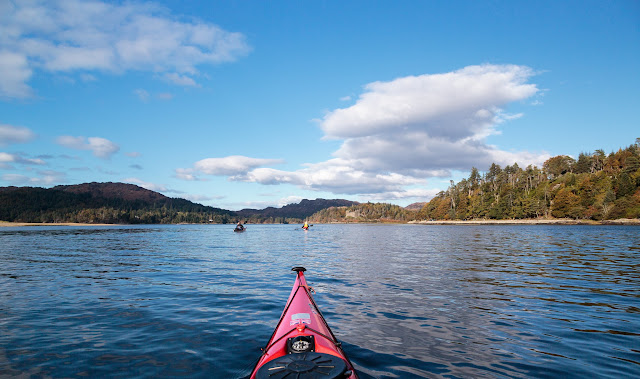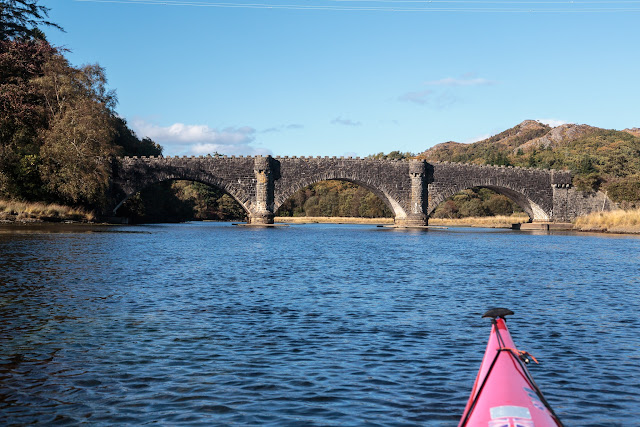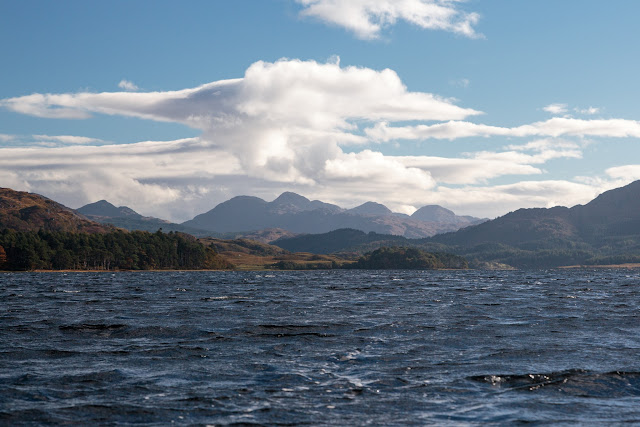From the ancient walls of Tioram castle we...
...proceeded to explore the inner recesses of Loch Moidart with the flooding tide.
A series of delightful channels separate the many isles that dot the inner loch.
As we paddled deeper into the wilderness, clouds streamed out from the summits of the high hills creating delightful contrasts between light and shade.
Some of the isles plunge steeply into the sea but others are...
...easier to land on being low lying. However, beware of camping here if a high spring tide is due in the early morning. Attractive, close cropped, level grass becomes covered at HW.
It was a joy not to be racing to get through the tidal North Channel of Loch Moidart on a falling tide (as we have often done).
The line of the North Channel runs straight as a die and the iconic...
...summit of the Sgurr of Eigg draws the eye...
...towards the open sea. Suddenly Lorna saw yet another...
...sea eagle wheeling over the crags above the channel.
It is a bit of a sea eagle hot spot here. David and I had seen these two here seven months previously.
As we neared the sea the clouds drew back and we paddled the outer half of the North Channel in...
...glorious sunshine which enhanced the autumn colours.
At low tide the mouth of the North Channel is a maze of skerries but...
...at high tide most are covered. We exited the North Channel and entered the open sea with a most marvellous prospect over the Sea of the Hebrides to Eigg and Rum.
We now proceeded to Port Achad an Aonaich where we intended to...
...set up camp on the machair. I went for a quick swim in 11C water then...
...we set up the tents, but the day was not over yet..oh no!
For the full stereovision experience follow this trip on Ian's blog:
here and
here























































